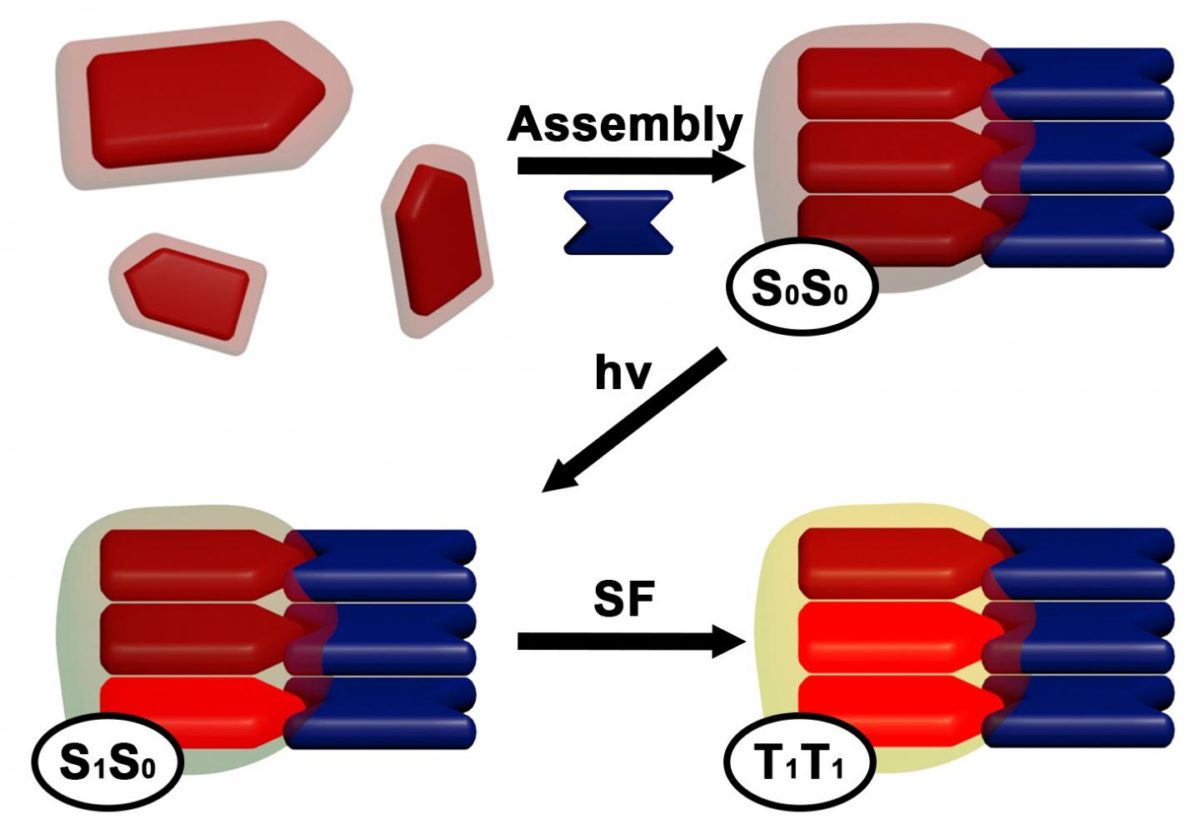Singlet fission is a photophysical process in molecules and molecular aggregates, whereby a singlet exciton generated by irradiation splits into two triplet excitons.
Why is that important? Because, according to a new research project, the process has the potential to raise the theoretical efficiency of solar cells from 33% to 44%.
Researchers from the Advanced Science Research Center at the Graduate Center of the City University of New York claim to have developed new nanomaterials through singlet fission that can extend the life of harvestable light-generated electrons.
“We modified some of the molecules in commonly used industrial dyes to create self-assembling materials that facilitate a greater yield of harvestable electrons and extend the electrons’ excited-state lifetimes, giving us more time to collect them in a solar cell,” said Andrew Levine, one of the resulting study’s authors.
Exciting news
According to Levine, the dyes used – which are based on diketopyrrolopyrrole (DPP) and rylene – are stacked through a self-assembly process which enables them to couple and share energy with – ‘excite’ – neighboring dyes after they have absorbed solar photons. In this way, the dyes’ electrons decouple and can be harvested as PV power.
The researchers claim each of the six self-assembling superstructures they created had subtle differences in geometry that affected the dyes’ excited states; the occurrence of singlet fission; and the yield and lifetime of harvestable electrons.
“Our method for combining the dyes into functional materials using self-assembly means we can carefully tune their properties and increase the efficiency of the critical light-harvesting process,” said research coordinator Adam Braunschweig.
As a next step, the research team is planning to develop a method to collect the solar charges created by the new nanomaterials.
Singlet fission has already been used in several research projects to reduce thermalization losses in conventional solar cells.
This content is protected by copyright and may not be reused. If you want to cooperate with us and would like to reuse some of our content, please contact: editors@pv-magazine.com.




Comprehensible? No. Useful? Yes. We non-specialists like to be reassured that that there is a broad wave front of blue-sky research progress that will in due course funnel into a much narrower pipeline of potentially commercial innovations, and ultimately into a handful of marketed devices. If the research progress were drying up, that would be a worry, though not an immediate concern.